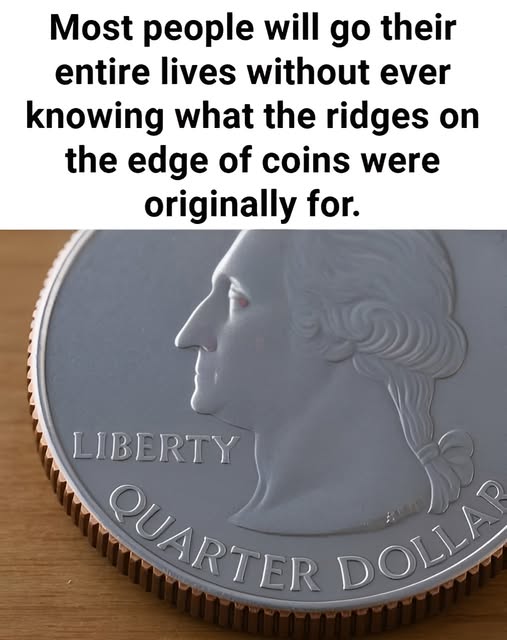Wow, I had no idea!…What You Didn’t Know About Coin Ridges
Coins may seem like simple pieces of metal, but their ridged edges tell a story of ingenuity, crime prevention, and tradition. Those grooves around quarters and dimes are far more than decoration—they’re a clever solution to an age-old problem.
**Stopping Coin Clippers**
Centuries ago, coins were made from precious metals like gold and silver, meaning each carried worth equal to its weight. This created an opportunity for theft through “coin clipping”—shaving small amounts of metal from edges, then collecting and selling the shavings. Over time, this undermined entire economies.
Governments’ solution was remarkably simple: add ridges around coin edges through a process called “reeding.” With ridges in place, any tampering became immediately visible. A clipped coin would have uneven or missing grooves, making the crime detectable. This 18th-century innovation turned a common theft into a risky endeavor.
**Why Modern Coins Still Have Ridges**
Today’s coins aren’t made from gold or silver—mostly copper, nickel, and zinc. Yet many still feature ridged edges for several practical reasons:
– **Accessibility**: Ridges help visually impaired people distinguish coins by touch
– **Anti-counterfeiting**: Producing perfectly aligned grooves requires specialized minting machinery difficult to replicate
– **Machine recognition**: Vending machines and coin-operated devices use ridge spacing to verify authenticity
**Why Some Coins Are Smooth**
Pennies and nickels have smooth edges because they were historically made from inexpensive metals with no clipping incentive. Since nobody could profit from shaving copper or nickel, protective ridges weren’t necessary.
**A Small Detail with Big History**
Each coin captures a piece of history. Just as watermarks protect paper money and holograms secure credit cards, ridged edges served as early anti-fraud technology.
Next time you hold a coin, run your fingers along its edge. Those tiny grooves tell a story of creativity, trust, and human problem-solving that still echoes today—even as the world shifts toward digital payments.






Post Comment